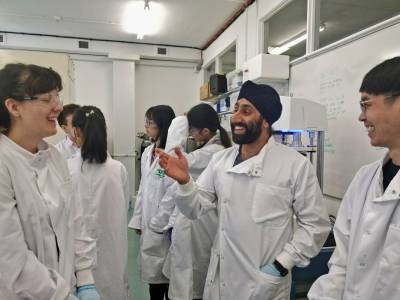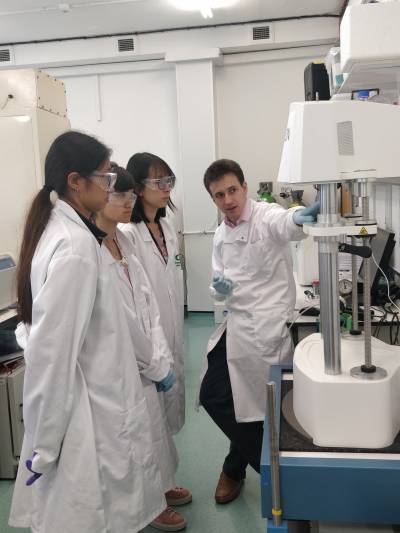Artificial tissues, electrical stimulation of nerves and 3D printing at the UCL International Summer
31 August 2018
We invited PhD student, Kulraj Singh Bhangra, to share his experiences of volunteering in a nerve tissue engineering lab at the UCL International Summer School in this blogpost.

This summer the Phillips lab and UCL Centre for Nerve Engineering had the privilege again of helping host the annual UCL International Summer School and meeting plenty of enthusiastic undergraduate students studying Neuroscience.
The Summer School students took part in an exciting and intensive three-week programme consisting of various lectures and tutorials on the nervous system. They began to understand the biology and complexity of these injuries and they got to have direct contact with surgeons who regularly repair nerves at the Royal National Orthopaedic Hospital.
Nerve injuries can be extremely debilitating causing a loss of normal movement, sensitivity and function. Surgeons strive to achieve excellent repair to restore normal function to their patients and it takes the successful communication of clinicians and scientists to work together and achieve this goal. As part of the Phillips lab we are perfectly positioned to showcase our cutting-edge nerve tissue engineering research and display the efforts we are making to create novel strategies for the effective repair of the nervous system.
Our lab, based at the UCL School of Pharmacy is largely multidisciplinary. The team is made up from PhD students from various academic backgrounds, for example, Engineering, Biochemistry, Medicine and even Mathematics. Yes, that’s right…Mathematics!
This is the second time I have had the opportunity to volunteer and I am always astounded by the enthusiasm and inquisitive nature of their minds. The students were fully engaged with the material and activities which led to them asking very interesting questions from topics surrounding stem cells to more translational research questions.

We were able to show the students our state-of-the-art repair strategy for peripheral nerve injuries; Engineered Neural Tissue (EngNT), which is the artificial nervous system tissue we make in the lab. Generally, peripheral nerve injuries are those that affect the nerves that sprout out from our spinal cord and brain.
These students had the opportunity to be in a tissue culture laboratory and observe the sensitive tissue cultures built by PhD students. I could see the amazed looks on their faces as we showed them the artificial tissue. This is something that they’ve probably only ever read about or seen the development of artificial tissues in sci-fi movies, the atmosphere was somewhat surreal for them.
They noted how sterile things were kept by the experienced PhD students. This brought home the fact that such devices would be implanted in humans and therefore be created by Good Manufacturing Practice protocols and that this type of production is even more stringent!
However, the real shock was when the brave students saw our electrophysiology equipment through which they learnt that nerves can be stimulated externally and if done correctly can lead to involuntary functional movements.

We were able to show them some mechanical testing of engineered neural tissue and what the results of these tests teach us. They were particularly fascinated when we showed them our 3D printing workshop station. The mathematicians of the group were able to explain to the students the use of powerful computational models to simulate nerve regeneration and the catalyst effect this can have on wet-lab based work.
The students were fascinated by the variety of backgrounds in our lab, but this also made it clear to them that the successful translation of a medical device requires a multidisciplinary approach.
As a PhD student, I learnt that it’s very easy to become tunnelled into your research and it’s rather refreshing speaking with people who are not directly involved in your work. It lets you take a step back and see the bigger picture, not only in terms of the research but also appreciate the nascent scientists in front of you who may even go on to continue your research and shape the future of the field.
 Close
Close

